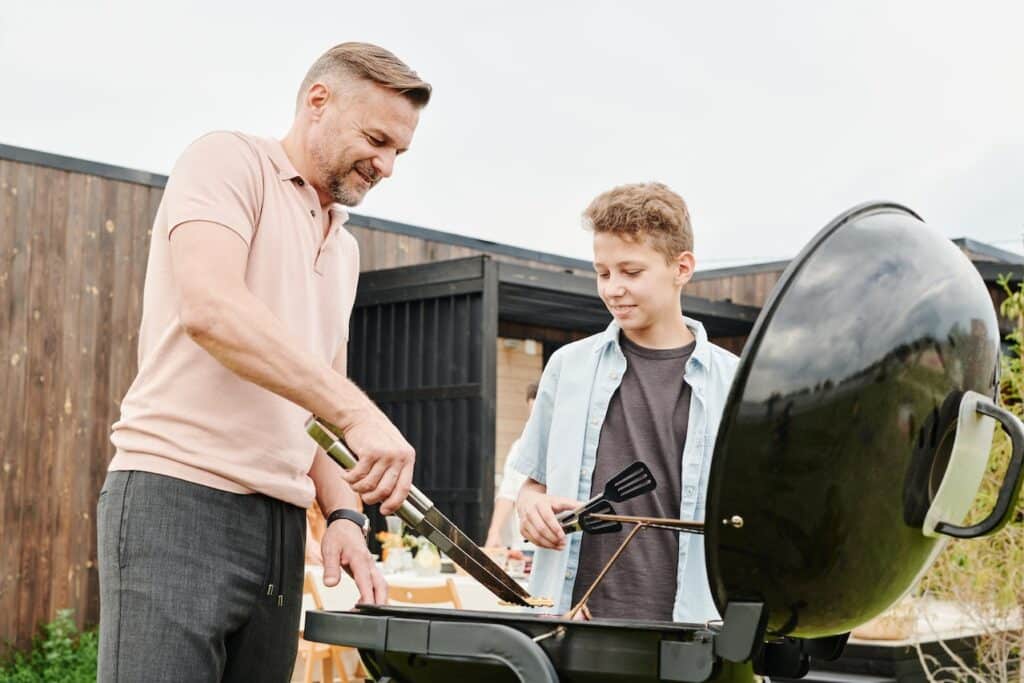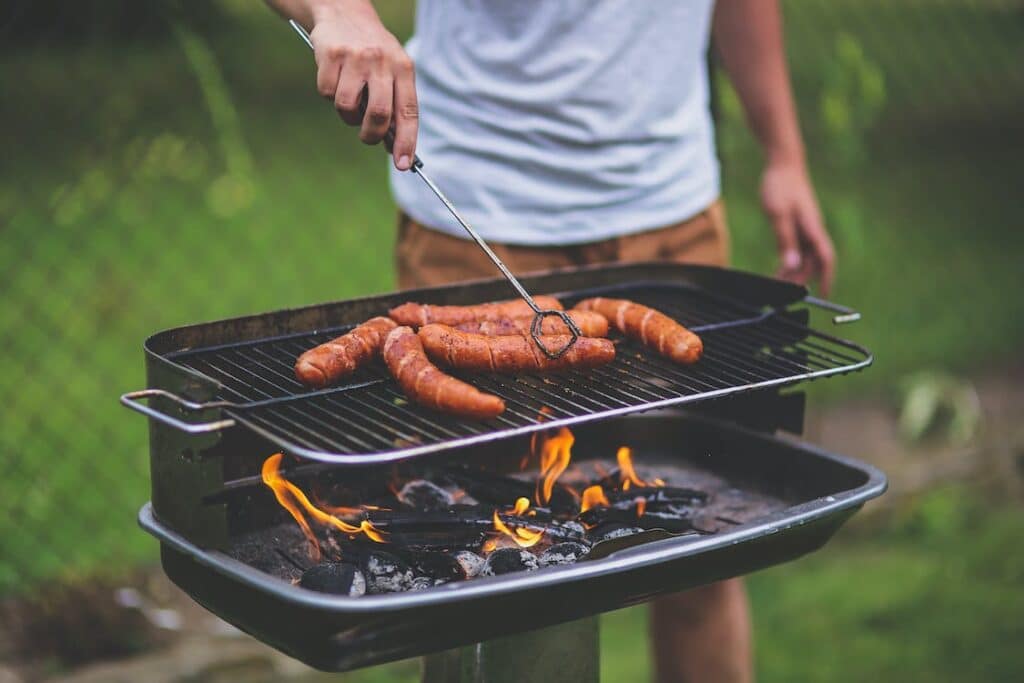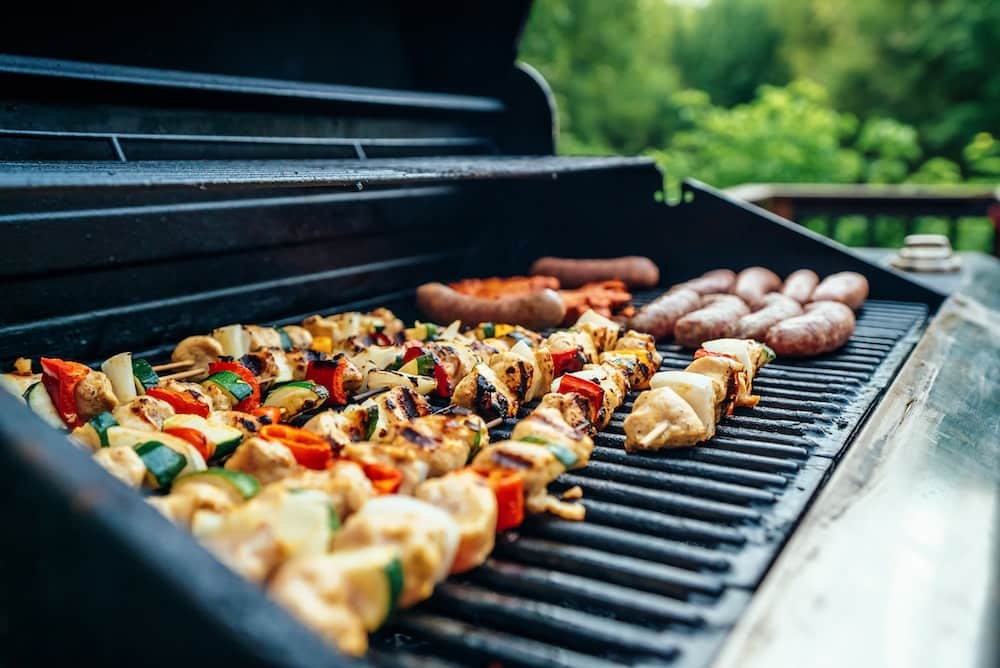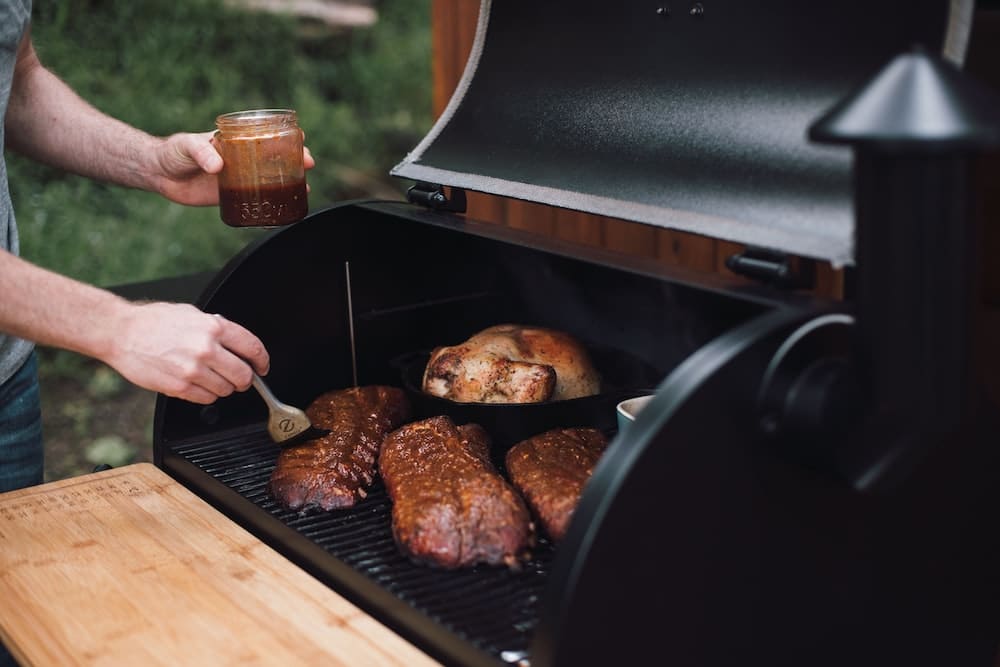Exploring the World of Pellet Grills: A Beginner’s Guide to Outdoor Cooking
You may have heard the buzz about pellet grills lately, and if you’re not quite sure what they are or how they work, you’re in the right place. As a grilling enthusiast myself, I can tell you that pellet grills are changing the game when it comes to outdoor cooking.

In this article, we’ll cover the basics of pellet grills, including their components and how they work together to create delicious meals. We’ll also explore the advantages of using a pellet grill vs. other grilling methods and provide some tips for using and maintaining your new piece of equipment.
So whether you’re a seasoned grilling pro or just getting started, keep reading to learn more about how pellet grills can take your outdoor cooking to the next level.
An Introduction to Pellet Grills and Their Growing Popularity
Pellet grills have been gaining popularity in recent years as an alternative to traditional charcoal or gas grilling. But what exactly is a pellet grill and how does it work?
At its core, a pellet grill is essentially a wood-fired oven that uses compressed sawdust pellets as fuel. These pellets are loaded into a hopper at the back of the grill, which then feeds them into the firepot via an auger.
Once ignited, the pellets produce heat and smoke that cook your food to perfection. And because they burn cleanly with minimal ash production, pellet grills are not only more efficient but also easier to clean than their charcoal counterparts.
But perhaps one of the biggest advantages of using a pellet grill is its ability to maintain consistent temperatures throughout your cooking process. With digital controllers and sensors built-in, these smart grills can automatically adjust their temperature settings based on your desired cooking time and other factors such as ambient temperature or wind conditions.
For those new to grilling or barbecuing who may be intimidated by traditional methods like smoking meat over wood chips for hours on end -pellet grills offer an approachable entry point while still delivering delicious results every time! So if you’re looking for something different this summer season why not give one of these innovative machines ago?
What are the components of a pellet grill and how do they work together?
A pellet grill is a sophisticated piece of equipment that combines various components to create the perfect grilling experience. Understanding how these components work together can help new grilling enthusiasts achieve delicious and succulent results.
At the heart of every pellet grill is the hopper, which holds the pellets. The pellets are made from compressed sawdust and wood shavings, which gives them a unique flavor profile. The hopper feeds pellets into an auger, which transports them to a firepot located beneath the grate.
The firepot ignites and burns hot enough to generate smoke that infuses your food with flavor while cooking it evenly. To control this process, there’s an electronic controller inside your pellet grill that regulates temperature by adjusting airflow from a fan located near or on top of your unit.
When you want more heat or smoke than usual for things like searing steaks or smoking brisket at low temperatures over long periods (8-12 hours), simply adjust settings using digital controls found on most modern models today!
By understanding how all these elements work together seamlessly in harmony with each other – anyone can become an expert BBQ master!
The process of cooking with a pellet grill
Cooking with a pellet grill is a unique experience that takes the art of grilling to a whole new level. Unlike traditional gas or charcoal grills, pellet grills use wood pellets as fuel to infuse your food with delicious smoke flavors.
The first step in cooking with a pellet grill is choosing the right type of wood pellets for your recipe. Different woods impart different flavors and intensities, so it’s important to choose wisely based on your preferences and the dish you’re preparing.
Once you’ve selected your pellets, preheat the grill to your desired temperature using its digital control panel. Pellet grills are known for their precise temperature control, allowing you to cook at consistent temperatures without constantly monitoring the heat source.
As you begin cooking on the pellet grill, be sure to monitor both internal meat temperatures and external temperatures on the grill itself. This will ensure that everything cooks evenly and reaches safe eating temperatures before serving.
One of my favorite things about cooking with a pellet grill is its versatility – from slow-cooking brisket overnight at low temps, smoking salmon fillets or even baking banana bread desserts outdoors! The possibilities are endless when using this amazing technology in outdoor living spaces where neighbors gather together over good food & drinks during summer months!
In conclusion – if there’s one thing I recommend trying out this year – it has got-to-be getting yourself one of these smokers/grill hybrids – they’ll change up how much more enjoyable barbecuing can be!

What are the advantages of using a pellet grill compared to other grilling methods?
« are pellet grills hoa approved
can pellet grills explode how to prevent a fire »
If you’re new to grilling and barbecues, or if you’re looking for a more efficient and effective way to cook your meat, then a pellet grill may be just what you need. Unlike traditional grills that rely on charcoal or propane, pellet grills use wood pellets as their fuel source.
The advantages of using a pellet grill are numerous. For one thing, they offer more precise temperature control than other types of grills. This means that you can set the temperature exactly where you want it and trust that your food will cook evenly without any hot spots.
Another advantage is the flavor factor. Because the wood pellets used in these grills come in different flavors (such as hickory or mesquite), they can add an extra layer of smokiness to your meats.
Pellet grills are also very versatile. They can be used for everything from slow-cooking ribs to searing steaks at high temperatures, making them suitable for all kinds of cooking styles and preferences.
Finally, there’s the convenience factor: Pellet grills require less attention than other types of barbecue equipment because they have automatic feeders that keep adding pellets throughout cooking time so there’s no need for constant checking up on it like with traditional charcoal smokers.
So whether you’re a seasoned pro looking to upgrade your equipment or someone just starting out who wants an easy way into outdoor cooking – consider investing in a quality pellet grill!
Tips for effectively maintaining and using a pellet grill
A pellet grill is a versatile cooking tool that can be used to create delicious meals with minimal effort. To get the most out of your pellet grill, it’s important to understand how it works and how to maintain it properly.
Firstly, let’s talk about the mechanics of a pellet grill. Pellet grills rely on compressed wood pellets as their fuel source – these are fed into a heating element using an auger system. The heat generated by the burning pellets is then circulated around the cooking chamber using fans, creating an even and consistent temperature for your food.
To ensure that your pellet grill stays in top condition, there are some basic maintenance tasks you should perform regularly. Firstly, make sure to clean out any ash or debris from the firebox after each use – this will help prevent any build-up that could affect airflow and combustion efficiency.
Additionally, you should check your hopper periodically to make sure there are enough pellets for your next cookout session! It’s also important not to overload or underload the hopper – too many pellets can cause jams in the auger system while too few will result in inconsistent heat output.

When it comes time for grilling itself , one key tip is patience: don’t rush things! Preheat your grill thoroughly before adding food (typically 10-15 minutes), so you’re starting with an even playing field temperature-wise . Be mindful not just of time but also internal temperatures; depending on what meat you’re preparing , different cuts may require different internal temps or lengthier cooks at lower temperatures like brisket which needs long slow hours over low heat so be prepared!
With these tips under our belt we hope newbies feel more confident tackling their first backyard barbecue !
Conclusion
There you have it—everything you need to know about pellet grills and why they’re rapidly becoming the go-to grilling choice for many. With advanced temperature regulation, easy clean up, and delicious results, investing in a pellet grill is definitely worth your time and money! So if you’re looking for an easier way to grill with great flavor every time come summertime – try out a pellet grill today!












